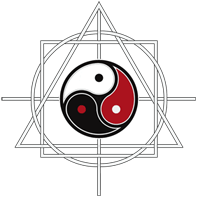
The First Personality Reading Based On
The Sacred Geometry Of Your Name Symbols.
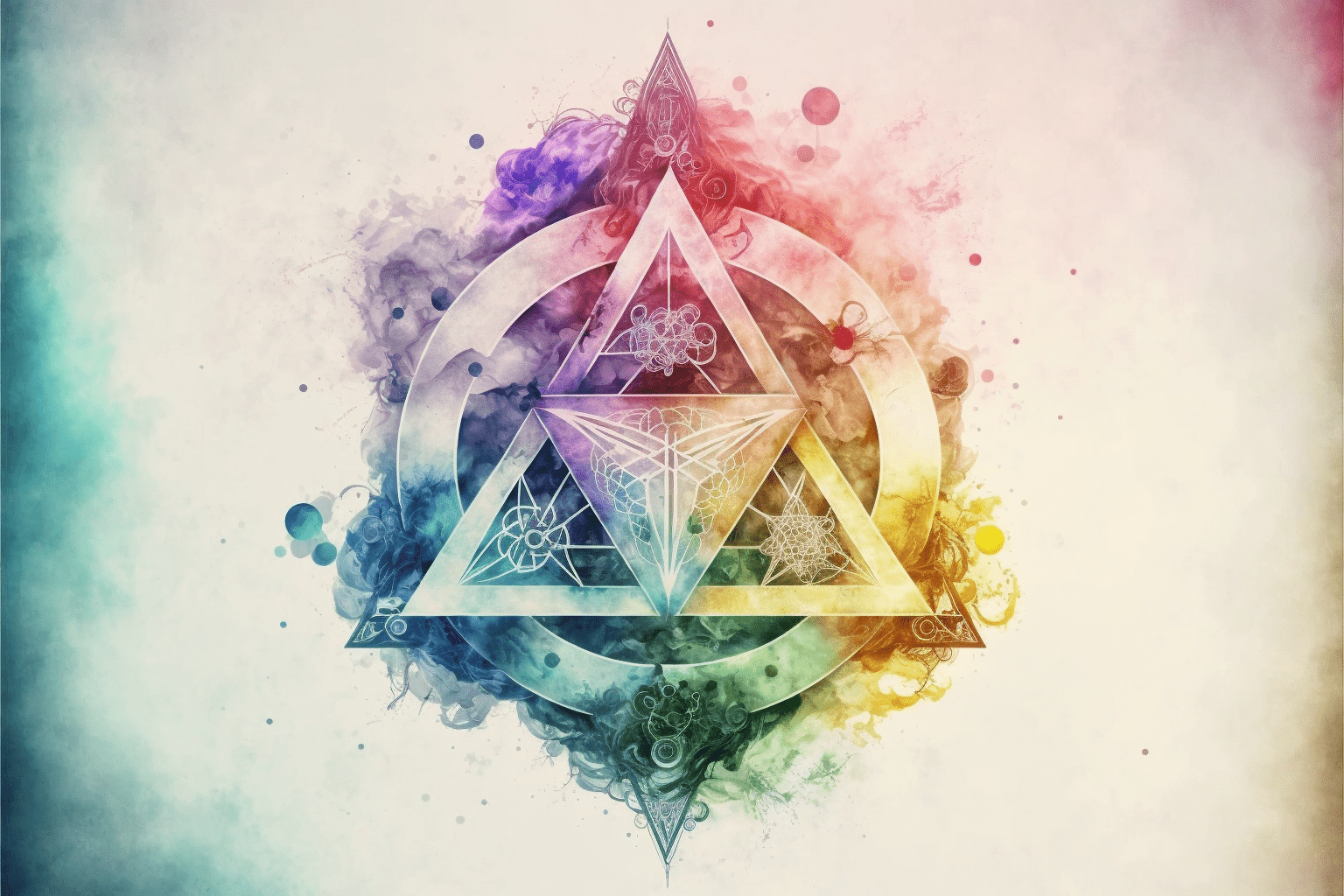

The radius can be likened to a straight line defined by two points: the center and the point of contact with the circumference (figure 1).
But this second point can itself be the center of a new circle as shown in figure 2.
From then on, the center becomes the middle of a segment through which rises a perpendicular that intersects the first two circles by two points of contact (only the high point is shown in figure 3).
By connecting these three points we obtain the figure of the equilateral triangle (figure n°4).
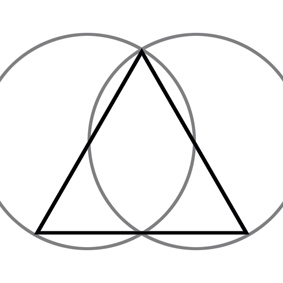
By extending the two oblique sides, we obtain two other crossing points with the two initial circles. If we add the low point to the graph we obtain the 3rd triangular number, the number 6.
The triangle has the particularity (with the square and the hexagon) to completely cover the plane (2D space) without leaving any empty space. Only these three figures benefit from this property.
By reproducing this operation along the circumference one obtains 6 equilateral triangles (figure n°5) inside a circle, i.e. hexagonal paving. The center of the circle becomes the seventh point, the only one common to all six triangles.
The numbers 1 and 2, although dividers of the circle, do not form a closed figure. The equilateral triangle or trigon is therefore the first of the polygons.
The trigon, or 3-sided polygon, is the first of the 22 polygons of the circle. It is associated with Time (which is successive), as well as the polygons of its family that it generates by simple duplication), the polygons with 6, 12 and 24 sides.
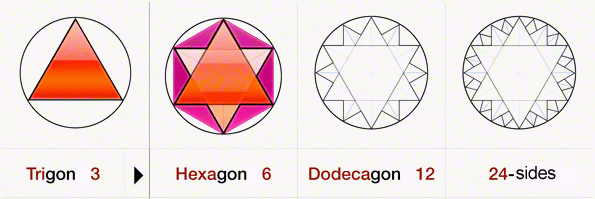
The triangular numbers are obtained by adding the counting numbers:
If the triangular number three has the shape of an equilateral triangle, following the homothetic development, the other triangular numbers will also have a regular shape, and the similarity of the shape is preserved in the development.
The tetrahedral numbers are obtained by adding the triangular numbers:
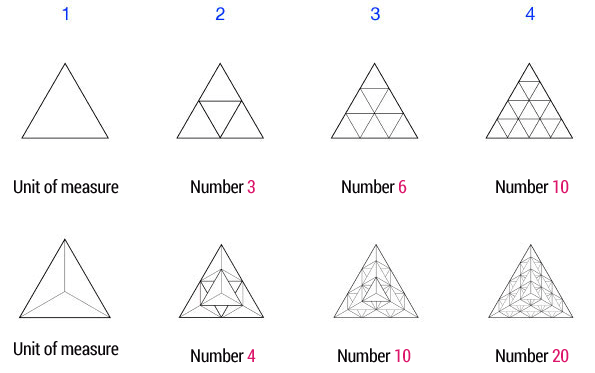
The number 3 - the first of the odd numbers (one being considered the number principle) - is symbolically represented by the divine figure or triangle.
Egyptian symbol of divinity, Pythagorean symbol of wisdom, Christian symbol of the Trinity, the equilateral triangle, the first closed figure of the second dimension (2D), represents the archetypal form of geometry.
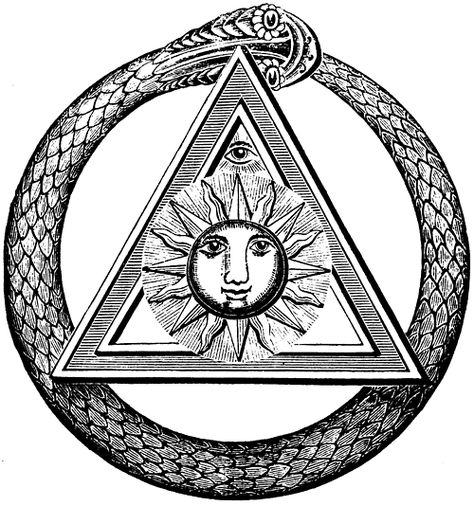
The human being, like the prism, is a Trinity. The three sides must be equal. In the same way, the human being must have harmoniously developed the triangle formed by his intellect, heart and will so that the light can manifest itself in all its splendor.
Only the equilateral triangle gives us the idea of perfect harmony because it expresses the agreement between the three principles where none has developed at the expense of the others.
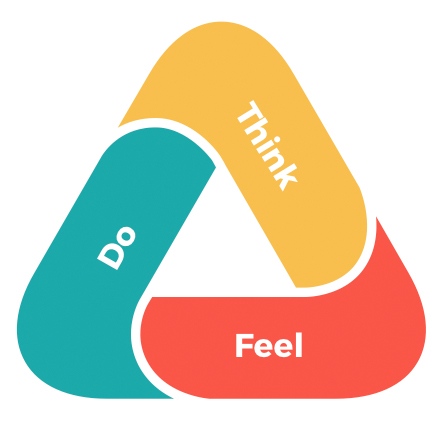
The triangle, we can say that it is the masculine and feminine principles that unite to give birth to a third principle. In the family it is father, mother and child; in chemistry, acid, base and salt; in man, intellect, heart and will (or thought, feeling and action), and among the divine virtues, wisdom, love and truth ... Just as a child is the product of a father and a mother, so salt is the product of acid and base, action is that of thought and feeling, truth is that of love and wisdom.
Alone, the equilateral triangle gives you the idea of perfect harmony, because it expresses the agreement between the three principles: none has developed at the expense of the others. If the equilateral triangle is the symbol of a perfectly balanced man, it is because it expresses precisely this agreement between the three principles of intellect, heart and will.
The drama triangle is a social model of human interaction – the triangle maps a type of destructive interaction that can occur among people in conflict. The drama triangle model is a tool used in psychotherapy, specifically transactional analysis. The triangle of actors in the drama are persecutors, victims and rescuers.
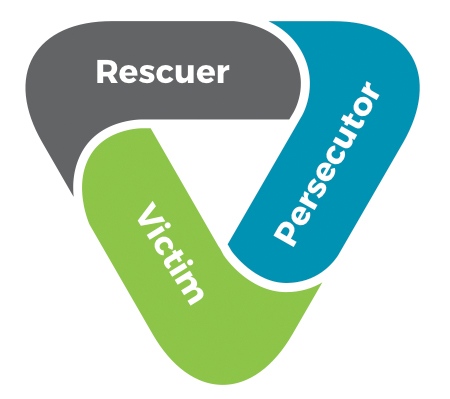
Vision of Trinity
The Christian Doctrine of the Trinity is in perfect harmony with other religions, as far as the role played by each of the Divine Persons is concerned. The word Person comes from persona (a mask, that which covers an object), and means the mask of the One Existence, the way in which He reveals Himself in a form. The Father is the Origin and the End of everything; the Son is double in nature. He is the Word, or Wisdom. The Holy Spirit is the Creative Intelligence which, hovering over the chaos of primordial matter, makes it fit to serve in the making of forms.
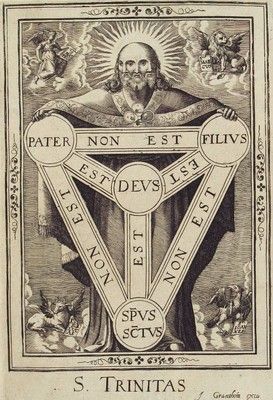
The triangle, associated with the number 3, also represents the universal triple force of the Holy Spirit symbolized by the three Elements that serve to characterize it in the Bible: Fire, Air and Water.
Associated with the Holy Spirit is the model of the active force used by the Creator to initiate His creation. He is the original Source of all that lives and is created in the Universe, in all dimensions of space and time.
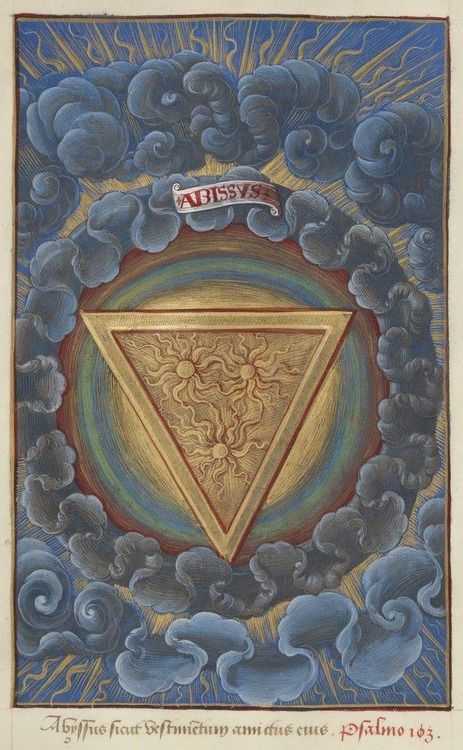
Mind, Heart and Will
Most of the time, men/women are triangles with unequal sides. Some have a much more developed will, which means that in most cases they are content to carry out the projects of others.
Others, on the contrary, have the intellect and the heart much more developed than the will: this means that these people think and analyze a lot, that they are also very sensitive, but when it comes to acting, realizing, they expect others to do it for them.
When this triangle of heart, intellect and will is perfectly developed, man realizes Trinity inside him.
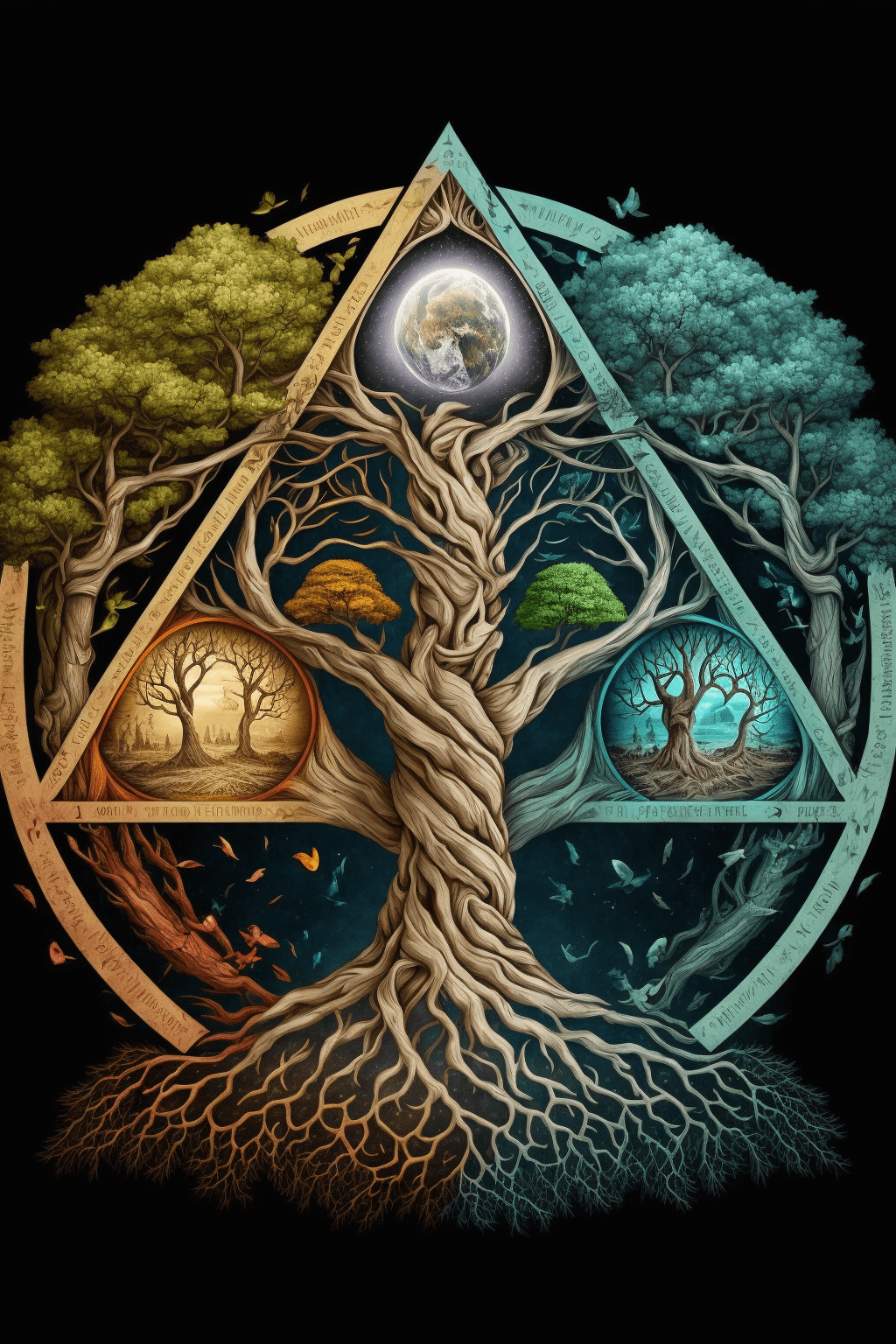
Man's triangle has its point facing down because it represents the cosmic Spirit that always descends towards matter, towards the earth, to vivify it, to spiritualize it and to give it a part of its energy: it represents involution. And the triangle of the woman has the point turned upwards because it is the symbol of the matter that goes up to reach its beloved, the spirit: it is evolution.
This meeting of spirit and matter is symbolized by the seal of Solomon, also called the hexagram.
A world made by triangles
This system of the World is based on the theory of Shapes or Ideas. These Ideas are, in his thought, the only real beings and the only ones that can be known, because they are eternal and immutable.
Form Plato the world is composed of assemblies of triangles, the four elements taken for simple bodies that transform into each other, a triple soul housed in three different places of the body.
Plato, takes the number, expressed by proportions and geometric figures, to make it the very basis of things, and since the triangle and the circle are the simplest and most perfect figures, he composes all the elements of triangles and gives the whole the spherical form.
The segment of a straight line determined by two points is in geometry, mechanics, architecture, the simplest element to which one can apply the ideas of measurement, comparison, ratio; the simplest operation introducing these concepts is the choice of any third point on this line; one passes from unity to duality and one is immediately in front of "proportion".
A proportion is the relation, the quantitative comparison between two quantities of the same nature, or the number that expresses this comparison. A proportion results from the agreement or equivalence of two or more ratios; therefore at least three quantities (here the line and its two segments) are needed to determine a proportion.
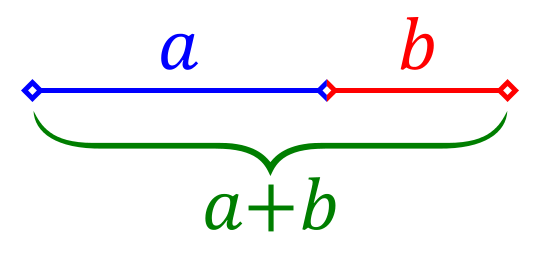
The proportion defined by a and b is called "extreme and medium reason" when a is to b what a + b is to a, i.e.: when (a + b)/a = a/b. The ratio a/b is then equal to the golden ratio.
The syllogism is composed of three propositions. The first two are the premises, the last one the conclusion. It consists of three terms (here "man" (A), "mortals" (B) and "Socrates" (C))
If all A is B and all C is A, then all C is B.
This is the eternal basis of any possible reasoning or calculation, and therefore of logic and geometry.
For Aristotle, the syllogism is identified with deduction (which goes from the general to the particular), as opposed to induction (which goes from the particular to the general) and analogy (which goes from the particular to the particular).
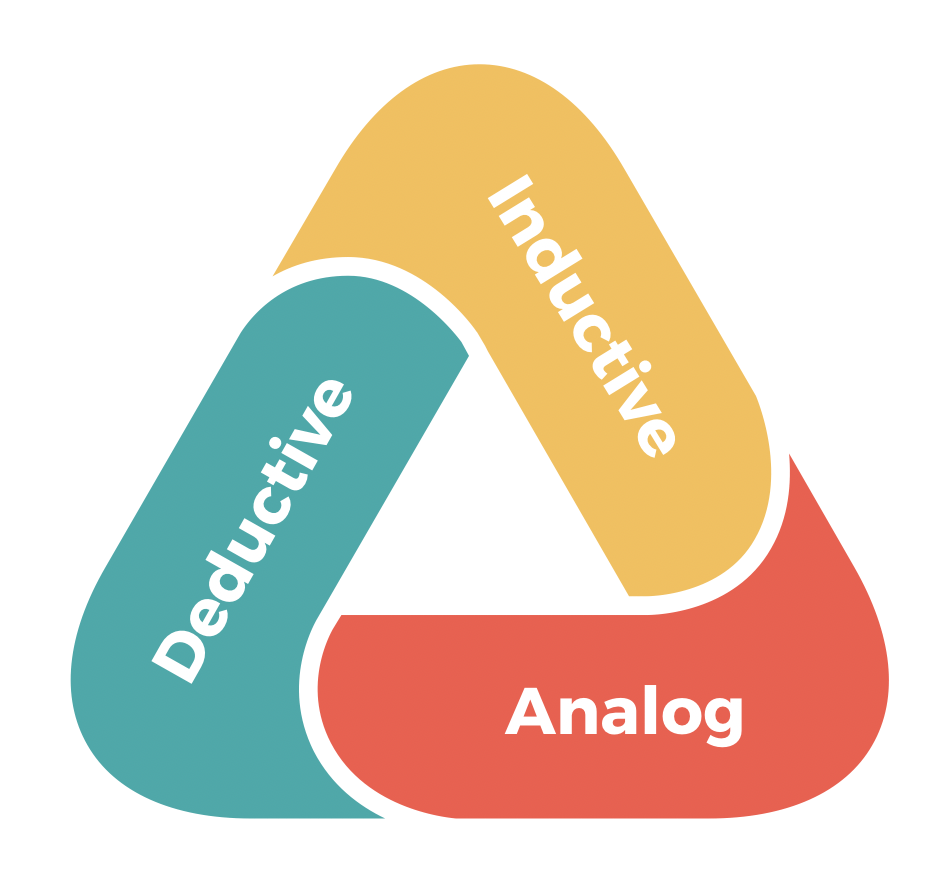
It is impossible to express a thought without forming what grammarians call a proposition. A proposition necessarily consists of three terms: the subject, the verb, and the attribute or adjective.
The verb that is active, powerful, and that makes the link. The whole grammar is based on these three functions, which we can also see in the triangle symbol.
